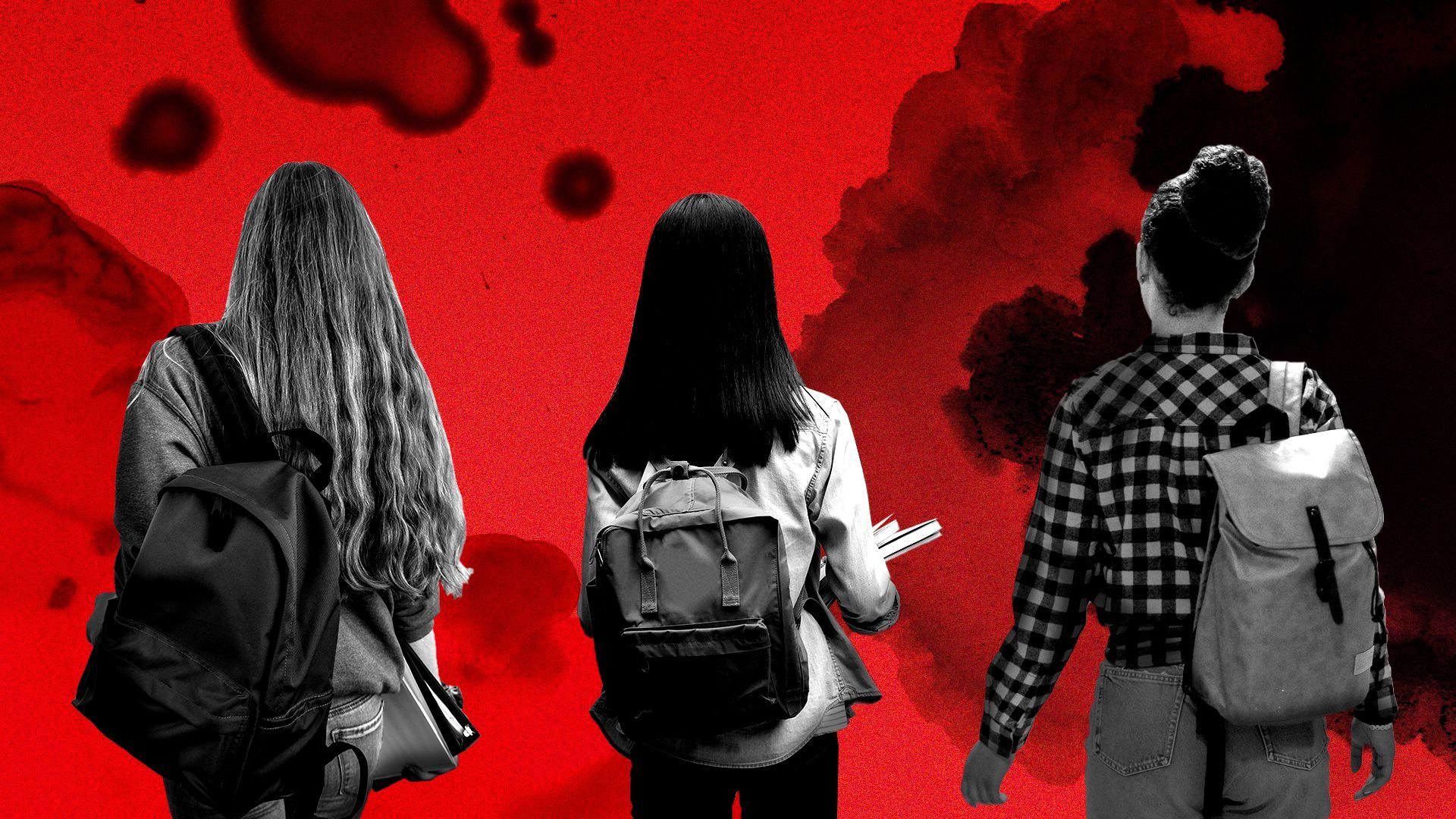
The teen mental health crisis is worsening by almost any measure. But it’s affecting girls almost twice as much as boys, according to new federal data.
The big picture: A pronounced gender gap in who is experiencing suicidal thoughts, sexual assault and persistent feelings of sadness or hopelessness point to the need for more tailored interventions and support.
- But schools — the de facto frontline responders — may not be equipped to provide it.
Driving the news: A CDC report released Monday found teenage girls are in the midst of the worst mental health decline in a decade, with nearly a third reporting they’ve seriously considered taking their lives.
- 1 in 5 girls said they recently experienced sexual violence in 2021, a 20% increase since 2017 when the CDC first began tracking the statistic.
- Teen girls were nearly four times more likely than boys to say they had ever been forced to have sex.
Threat level: Trauma experienced in childhood can fuel substance use, affect brain development and lead to chronic illnesses such as heart disease or cancer, per the National Child Traumatic Stress Network.
- And the shortage of qualified behavioral health workers is directly factoring in increased rates of youth suicides, per a November analysis in JAMA Pediatrics.
Where it stands: While parents and legislators are increasingly recognizing the responsibility schools have in addressing mental health concerns, districts are hard-pressed to keep counseling, screenings, teletherapy and other services that have been sustained with federal COVID relief dollars.
- “We have to take notice of that or we’ll lose a whole generation,” said Tara Wallace, a child trauma therapist in Topeka, Kansas, a state ranked second-to-last in the U.S. for youth mental health by Mental Health America.
Flashback: The mental health crisis among teen girls predates COVID, lockdowns and other stressors during the pandemic.
- A Pew Research study in 2019 found that teen girls in the U.S. were three times more likely than boys their same age to have depression.
- Before COVID, 1 in 5 children had a mental health disorder but only a fifth got care, per the CDC.
Yes, but: There’s no single factor that lead to this mental health decline in teen girls, said Debra Houry, the CDC’s chief medical officer.
- The pandemic, social media, stressors at school, online misinformation and societal conflict can all play a role.
- Past studies have suggested girls tend to dwell on their negative emotions as a coping mechanism and are more likely than boys to be perfectionists to the point of burnout and intense self-critique.
What they’re saying: Schools intervening early can improve outcomes, but the level of services available depends on investment from states, said Angela Kimball, a senior vice president at mental health care advocacy group Inseparable.
- These interventions include teaching coping skills, connecting families to resources, training teachers how to understand and identify mental health and addiction and having on-site school counselors or psychologists, said Laura Gray, a child psychologist at Children’s National Hospital in D.C.
- Low Medicaid reimbursement rates are another barrier, Wallace told Axios.
- “A lot of individuals in private practice are no longer accepting [Medicaid patients] because they can’t afford to,” Wallace said. “They want to help the families. They want to help the kids, but they can’t afford to live.”
The bottom line: Making sure the youth mental health crisis doesn’t get worse will depend on targeted intervention efforts to groups facing severe risks, and a sustained push to ensure schools can provide them.